The summer is a time for balloons – children’s balloons in the park, adult balloon flights in the sky, or as a part of a day’s adventure at the theme park. Historically, their beginnings are associated with the great experiments of the Montgolfier brothers in the late 18th century.
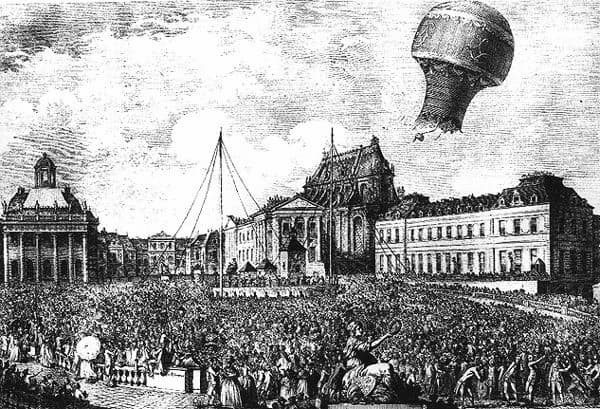
Montgolfier brother’s first flight with passengers (a sheep, a duck and a rooster), Sept. 19, 1783. (Image credit: 2001 National Air and Space Museum, Smithsonian Institution)
Ballooning captures the imagination – Jules Verne used the idea in at least three of his adventure novels, and composers have used the idea from a variety of viewpoints.
Dominic Argento based his song cycle The Andrée Expedition on the failed Swedish expedition led by Salomon August Andrée that attempted to reach the North Pole. Andrée’s 1897 expedition failed, leading to the death of all members, owing both to a faulty steering mechanism and a leaking balloon.
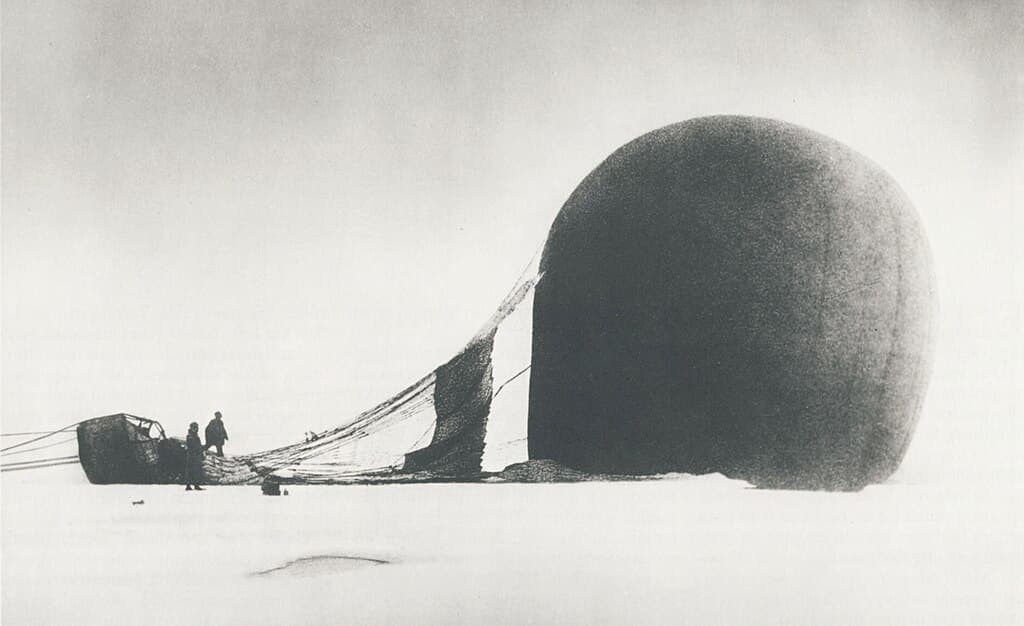
S. A. Andrée and Knut Frænkel with the polar balloon Örnen (Eagle)on the pack ice, photographed by the third expedition member, Nils Strindberg. The exposed film for this photograph and others from the failed 1897 expedition was recovered in 1930.
Argento cast his work based on surviving letters from S.A. Andrée and Nils Strindberg. In the prologue, Knut Frænkel, describes the journey and his companions…and his doubts.
Dominick Argento: The Andrée Expedition – Part I, “In the Air”: No. 1. Prologue (Knut Frænkel) (Brian Mulligan, baritone; Timothy Long, piano)
In her 2014 work Up and Away: The Story of a Balloon, American composer Alyssa Morris was commissioned by the Sundance Trio (oboe, bassoon, and piano) and produced a work on the travels and adventures of a balloon. The second movement, Life on a String, gives a jazz-inflected vision of the balloon bouncing and moving on its string. The last movement, Letting Go, is the balloon’s escape and journey ever upward until it vanishes.
Alyssa Morris: Up and Away – The Story of a Balloon: II. Life on a String (Sundance Trio)
Heitor Villa-Lobos’ 1925 work Cirandinhas incorporates Brazilian folk melodies into its 12 piano pieces. The 6th piece is a child’s request for his runaway balloon.
Heitor Villa-Lobos: Cirandinhas – No. 6. Cai, cai, balao (Come down, balloon) (Fernando Calixto, piano)
Richard Rodney Bennett, known not only for his chamber works and symphonies but also his film music, wrote two collections of Travel Notes. The first was written for string quartet and concerned different types of transport, from foot to pram to hearse. Travel Notes 2 was written for wind instruments and continues the transportation theme: helicopter, bath chair, car chase, and, of course, balloon.
Richard Rodney Bennett: Travel Notes 2 – I. In an Air-Balloon (London Myriad)
Yoshinao Nakada’s Songs of Japanese Toys includes one on a paper balloon, set to poetry by Eriko Kishida.
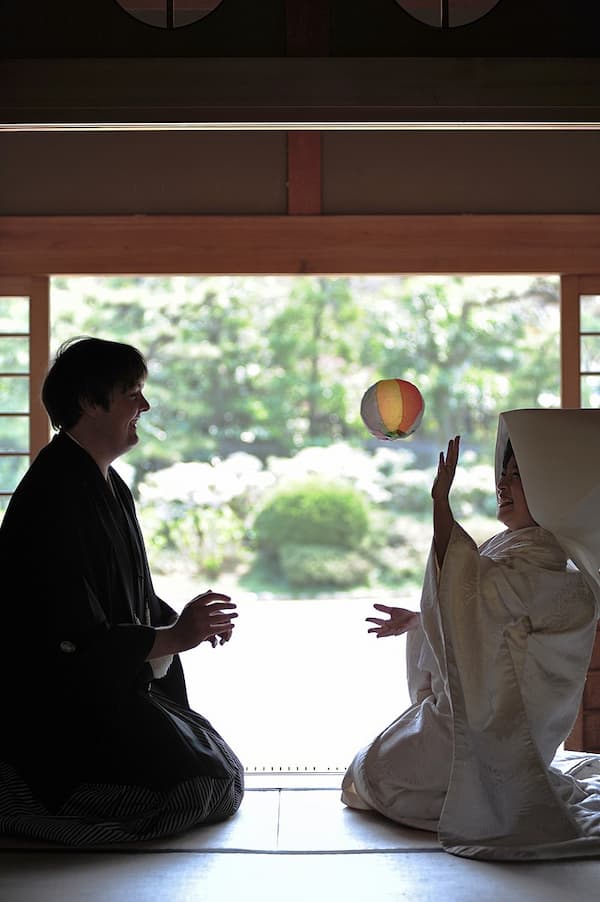
Newlyweds playing with a paper balloon (Photo by gwaar)
Yoshinao Nakada: Nihon no omochauta (Songs of Japanese Toys) – No. 7. Kamifusen (A Paper Balloon) (Naoko Igarashi, soprano; Sets Miyashita, piano)
Philip Sparke used Jules Verne as the inspiration for his 2005 work Three Extraordinary Journeys, each movement of which was based on a different Jules Verne novel. Two are very familiar through their film versions: 20,000 Leagues Under the Sea (movement 1) and Around the World in 80 Days (movement 3). The middle movement, based on Verne’s 1863 novel Five Weeks in a Balloon, uses the first of Verne’s Voyages Extraordinaires novel to picture the daring trip across Africa taken by our intrepid explorers.
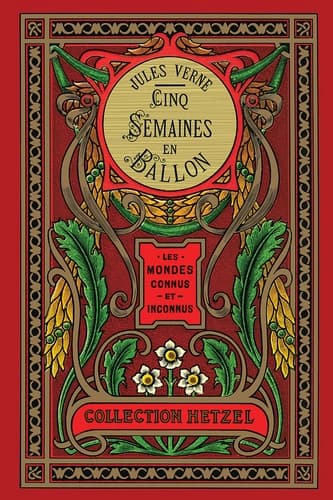
Verne: Five Weeks in a Balloon
Philip Sparke: 3 Extraordinary Journeys – No. 2. Five Weeks in a Balloon (Osakan Philharmonic Winds; Yoshihiro Kimura, cond.)
Benjamin Frankel’s music for the 1949 film Trottie True tells the story of a child musical hall star who meets and falls in love with a balloonist when he crashes into her parent’s backyard.
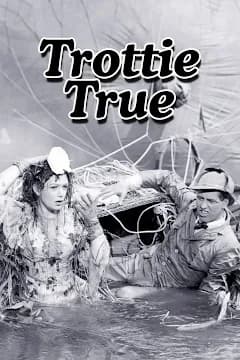
Trottie True
Benjamin Frankel: Trottie True – The Balloon’s Toon (Queensland Symphony Orchestra; Werner Andreas Albert, cond.)
Czech composer Oldřich František Korte’s music for Kouzelný cirkus (Wonderful Circus) is some of his best-known work and includes, of course, a balloon flight.
Oldřich František Korte: Wonderful Circus (Kouzelný cirkus) – III. Balloon Flight (Miroslav Kejmar, flugelhorn; Czech Symphony Orchestra; František Belfín, cond.)
Hollywood composer Bernard Herrmann’s music for the film Mysterious Island picks up the story of a group of Union prisoners who escape via balloon and land on a … mysterious island. An unseen benefactor helps our castaways, and he turns out, in the end, to be none other than Captain Nemo, who has retired under the island with his submarine, the Nautilus.
Bernard Herrmann: Mysterious Island – The Balloon (National Philharmonic Orchestra; Bernard Herrmann, cond.)
American composer Judy Dunaway has been captured by the idea of balloons. Many of her compositions include parts for latex balloons of various sizes (tenor to giant) and shapes (round and long).
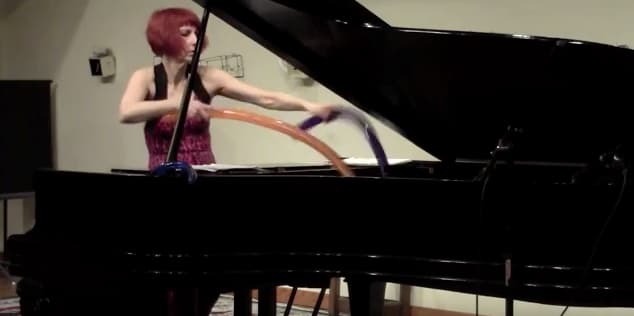
Kathleen Supove performing Dunaway’s Piano with Balloons, 2012
She uses small balloons for their sound-making qualities, pinching the neck of the balloon so that it operates much like a double reed. In her earlier performances, she would use her mouth as a resonant chamber and use her tongue for articulations. She stopped this in 2014 after problems with her eye pressure.
Judy Dunaway: Reed Balloon Improvisation
In 2000, she wrote a piece for bass koto and balloons, where many of the traditional koto bridges were replaced by balloons.

Bass Koto with Balloons (Photo by Bozidar Bruce Yerkovich)
The koto player improvises the pieces based on a randomly drawn set of cards. Both the strings and the balloons come into play as sound producers.
For Koto with Balloons performed by Ryuko Mizutani
In her 2001 work for the FLUX Quartet, the balloon is played three different ways in each movement. In the first movement, it’s used as a reed (as explained above); in the second, it becomes an ‘orb-shaped string’ when rubbed with wet hands; and in the last movement, it’s used as a giant resonator.
Judy Dunaway: For Balloon and String Quartet – II. — (Judy Dunaway, balloon; FLUX Quartet)
Dunaway’s use of an unusual instrument gives us unusual sounds – she’s not flying like our earlier composers but using it as another way to take flight, this time with imagination.
Balloons are ephemera – here today and popped tomorrow. They may have a short life but live long in our memories of wonderful times and wonderful things. As sound objects, they may start with a loud POP! However, as we get more used to handling delicate envelopes of air, we can explore the many sounds they can make.
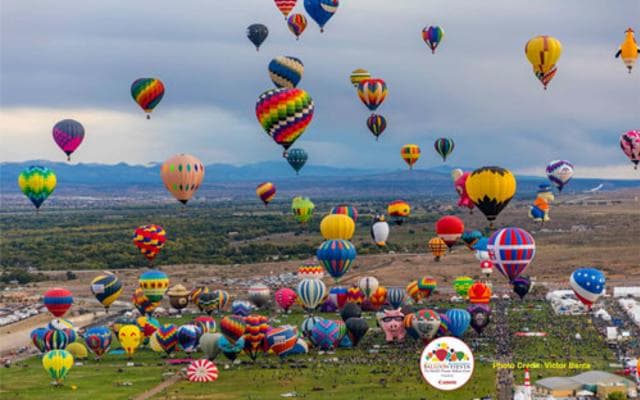
Albuquerque Balloon Fiesta
Take flight in sound or in person, or vicariously, by blowing up a balloon and experimenting!
For more of the best in classical music, sign up for our E-Newsletter


